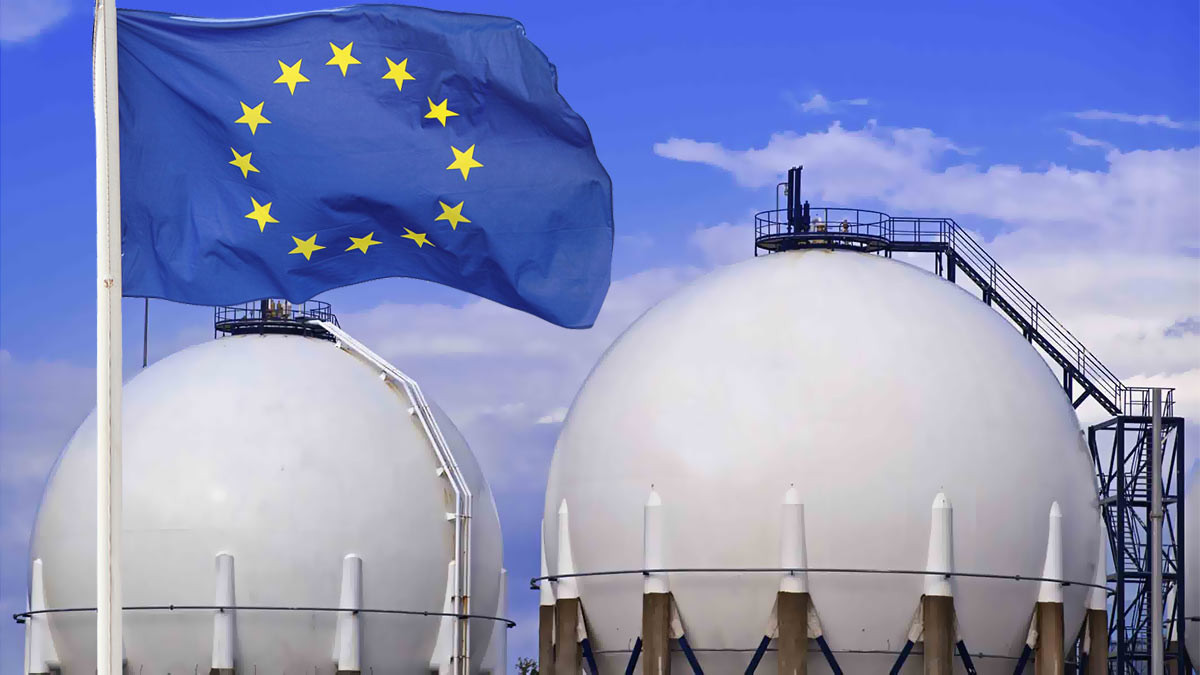
Looking at the last few days, we can safely state that the situation on the European gas market has improved. Exchange prices for gas in Europe fell by almost 10% on October 19, that is, they fell below $1,200 per 1 thousand cubic meters. This decrease occurred for the first time since July 15.
The downward trend in European market futures for natural gas remained on Wednesday. And there are several reasons for this.
Firstly, the EU countries have very successfully managed to fill natural gas storage facilities. So successful that it caused a pandemonium of LNG tankers off the coasts of Spain and Portugal. Dozens of ships carrying liquefied natural gas (LNG) simply cannot unload, as storage facilities in the EU are already occupied. This was reported by the Spanish edition of ABC.
At the moment, according to ABC reports, the average volume of gas reserves in the EU exceeds 92%. Technically, this means that the terminals are almost completely full. In Spain, this figure is higher than the average and is 93% – the same as in Germany (96%), France (99%) and Italy (94%).
That is, there should be no interruptions in the supply of energy resources in Europe during the winter months. Separately, I would like to be happy for Germany, where industrial production and electricity production are based on intensive gas consumption. German gas storage facilities are 96% full, largely due to a noticeable reduction in industrial capacity.
Secondly, of considerable importance for Europe is the slowdown in economic growth in China, which is due to widespread bans in the country on the movement of people. Supplies of liquefied natural gas (LNG), which were initially intended for the Chinese market, were able to safely cross to Europe.
And do not forget about the impact on quotes of weather conditions, which have recently been quite favorable. Plus, the austerity measures that the European government has introduced for its citizens have contributed to a noticeable reduction in gas consumption.
In addition, some German nuclear power plants are still extending their work until the spring of 2023, which relieves tension.
However, all these positive factors for Europeans do not mean that prices will continue to fall and remain relatively low all winter. An important role here is assigned to such an unpredictable factor as weather conditions. If the winter is harsh and European storage facilities start emptying quickly, even with all the austerity measures taken, then the price of gas will rise sharply again.
So, gas reserves in Europe are enough for about two months of typical consumption. Their current capacity was most likely designed to provide volumes in conditions when the Nord Stream and those gas pipelines that pass through Belarus and Ukraine were functioning quietly. Today, very scarce supplies of natural gas from Russia to Europe continue, but they will stop sooner or later.
And supplies from the Groningen gas field in the Netherlands will undoubtedly continue to decline, as the volume of production there is decreasing due to local earthquakes.
A meeting of the leaders of the EU countries will take place this week, at which the latest proposal of the European Commission on limiting energy prices will be approved. It is likely that most EU countries will call for the introduction by Brussels of a ceiling for the prices of natural gas, which is used to generate electricity.





















